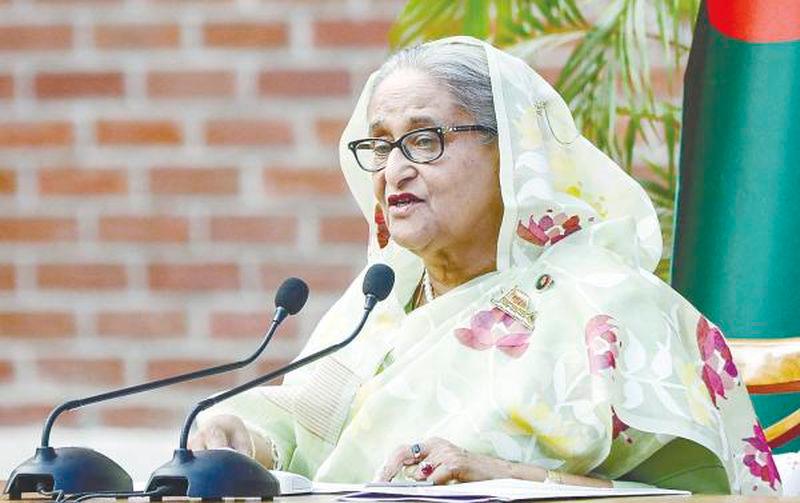IN a volatile twist of fate, Sheikh Hasina, the long-serving prime minister of Bangladesh was forced to flee the country she governed for 15 years. She left in a huff, fearing for her life and left everything she had built behind.
Her sudden departure accentuates the impermanence of life, a concept that, though familiar, often catches us off guard.
This reality, that nothing in life is guaranteed, runs through our existence like an unpredictable undercurrent. Sometimes it nudges us gently, reminding us that change is inevitable and yet at other times it hits us with the force of a tsunami, sweeping away all certainties in its wake.
Many of us live under the illusion that tomorrow is ours by design, and that the universe owes us a smooth path to our desires. But Sheikh Hasina’s flight from her homeland is a stark reminder of how quickly that illusion can shatter.
The protests that began as student-led demonstrations against job quotas spiralled into a broader movement demanding her resignation.
What started as a focused grievance quickly escalated into nationwide unrest, with violent clashes between protesters and security forces leading to hundreds of deaths and a state of chaos across Bangladesh.
In the aftermath, as the country struggles to regain its footing, a flicker of hope emerges. Nobel laureate Muhammad Yunus has stepped in to lead an interim government, tasked with overseeing elections.
The big question is whether Bangladesh can navigate its way to genuine stability or whether the political turbulence will continue to churn, plunging the nation into yet another cycle of uncertainty.
This scenario is not unique to Bangladesh. In fact, the history of nations is full of examples where chaos, rather than being an end, serves as a prelude to new beginnings.
When systems break down and the status quo becomes unsustainable, it often sparks a desire for change. People rally, not just in protest, but in a collective movement towards reform or even revolution. The turmoil, though destructive, can act as a crucible in which new governance structures, social norms and political frameworks are forged.
For example, take the Arab Awakening, which began in 2010. A wave of demonstrations across the Arab world led to the toppling of regimes in countries like Tunisia, Egypt and Libya. While the outcomes have been mixed, the initial chaos disrupted long-standing autocratic rule and opened the door to possibilities that had not existed before.
In Tunisia, for instance, the upheaval led to a transition to a democratic government, illustrating how even the most chaotic situations can pave the way for meaningful change.
Chaos, paradoxically, can also foster creativity and innovation. When faced with adversity, individuals and communities often do think on their feet, devising solutions to problems that may not have been apparent in more stable times.
This may manifest in grassroots movements, where ordinary citizens take the lead in pushing for change or in technological advancements designed to address the challenges brought about by disorder.
For instance, during the Covid-19 pandemic, which brought the world to its feet, we witnessed unprecedented innovation in healthcare, from the rapid development of vaccines to the widespread adoption of telemedicine and everything remote.
But while chaos can lead to renewal, it can also open the door to more sinister forces. Nowhere is this more evident than in the realm of misinformation, which thrives in the shadows of uncertainty. The United Kingdom, for example, has recently been grappling with a different kind of chaos, one not born of political strife but of fabricated narratives spread online.
A false story claiming that a Muslim immigrant had stabbed children at a Taylor Swift-themed dance party in a northwest coastal town in England triggered a wave of violence and unrest across the country.
The truth was far less sensational as the perpetrator was a local youth from Wales but by the time the facts emerged, the damage had been done.
This misinformation, which spread rapidly on social media platform X, was left unchecked by its owner Elon Musk. As the story gained traction, white supremacists and other extremists took to the streets, targeting immigrants, immigration facilities and mosques in several UK cities.
The riots, according to key media leaders, were far from spontaneous. They were fuelled by orchestrated disinformation campaigns, which manipulated public sentiment and incited violence.
It has been warned that the digital landscape is increasingly vulnerable to such manipulation. “The disease has evolved much faster than the immune system has,” said a founder of a media house, referring to the rapid spread of misinformation compared with the slow development of countermeasures.
“We are approaching a place of maximum information entropy, where these things are going to be harder to see, especially as the situation becomes more unpredictable”, he warned.
This new form of chaos and digital disinformation poses a significant threat not just to individual countries but to global stability.
As distortion campaigns become more sophisticated, the potential for widespread disorder increases, making it all the more difficult to discern truth from falsehood.
The anarchy that arises from this can be just as destabilising as any political upheaval, with the added danger that it is harder to combat because it exists in the murky, often anonymous world of the internet.
In the end, chaos, whether born from political strife or digital deceit, is an inescapable part of life’s impermanence. It reminds us that nothing is fixed, and that even the most entrenched systems and beliefs can be toppled in an instant.
Bhavani holds a doctorate in English literature. Her professional background encompasses teaching, journalism and public relations. She is currently pursuing a second master’s degree in counselling.
Comments: letters@thesundaily.com










